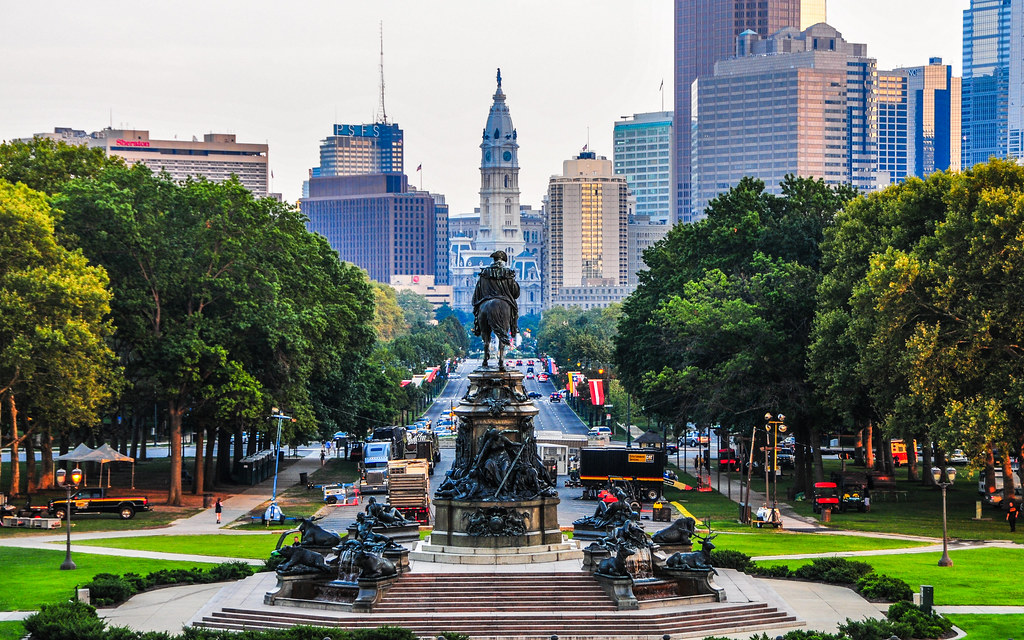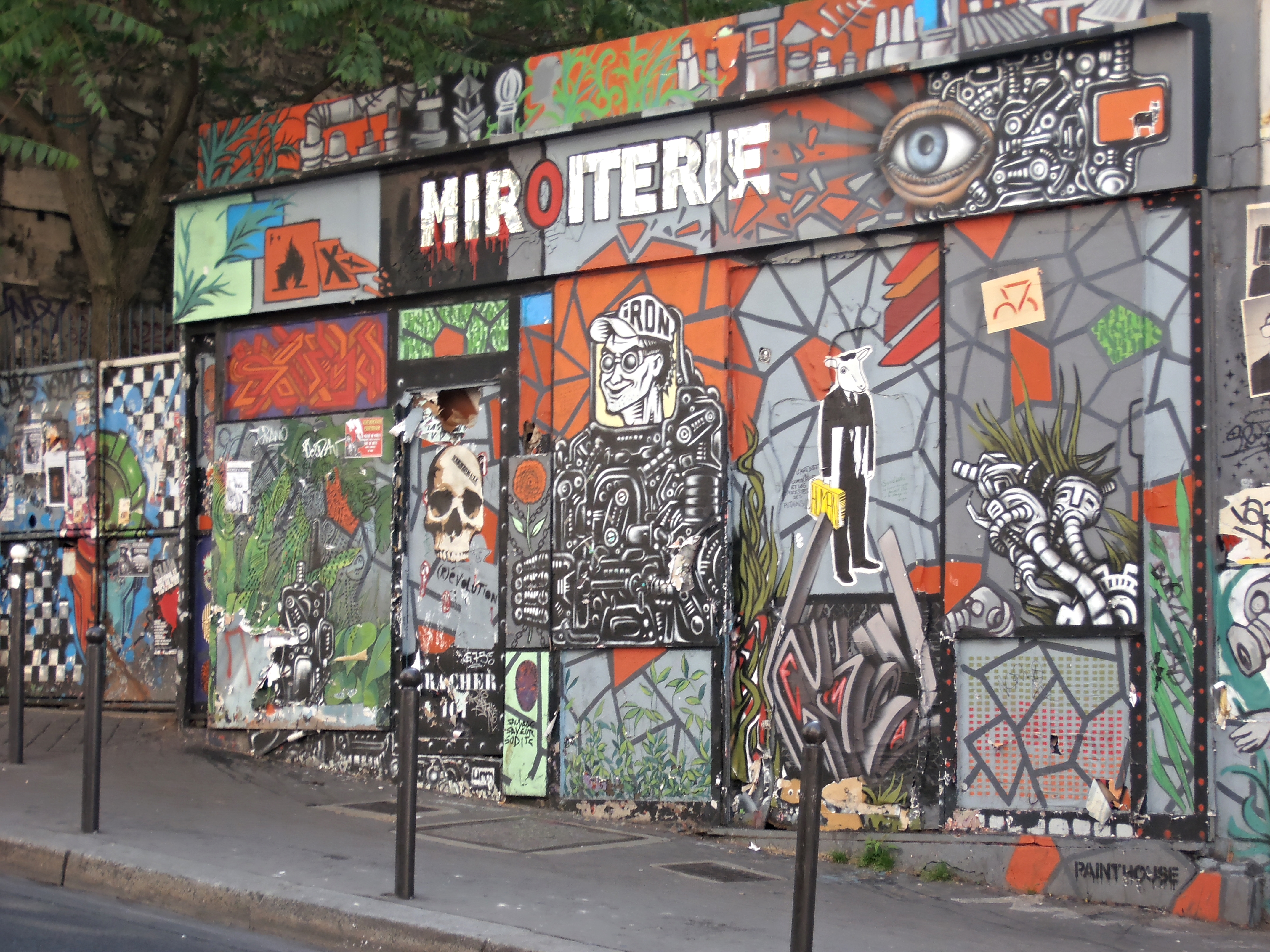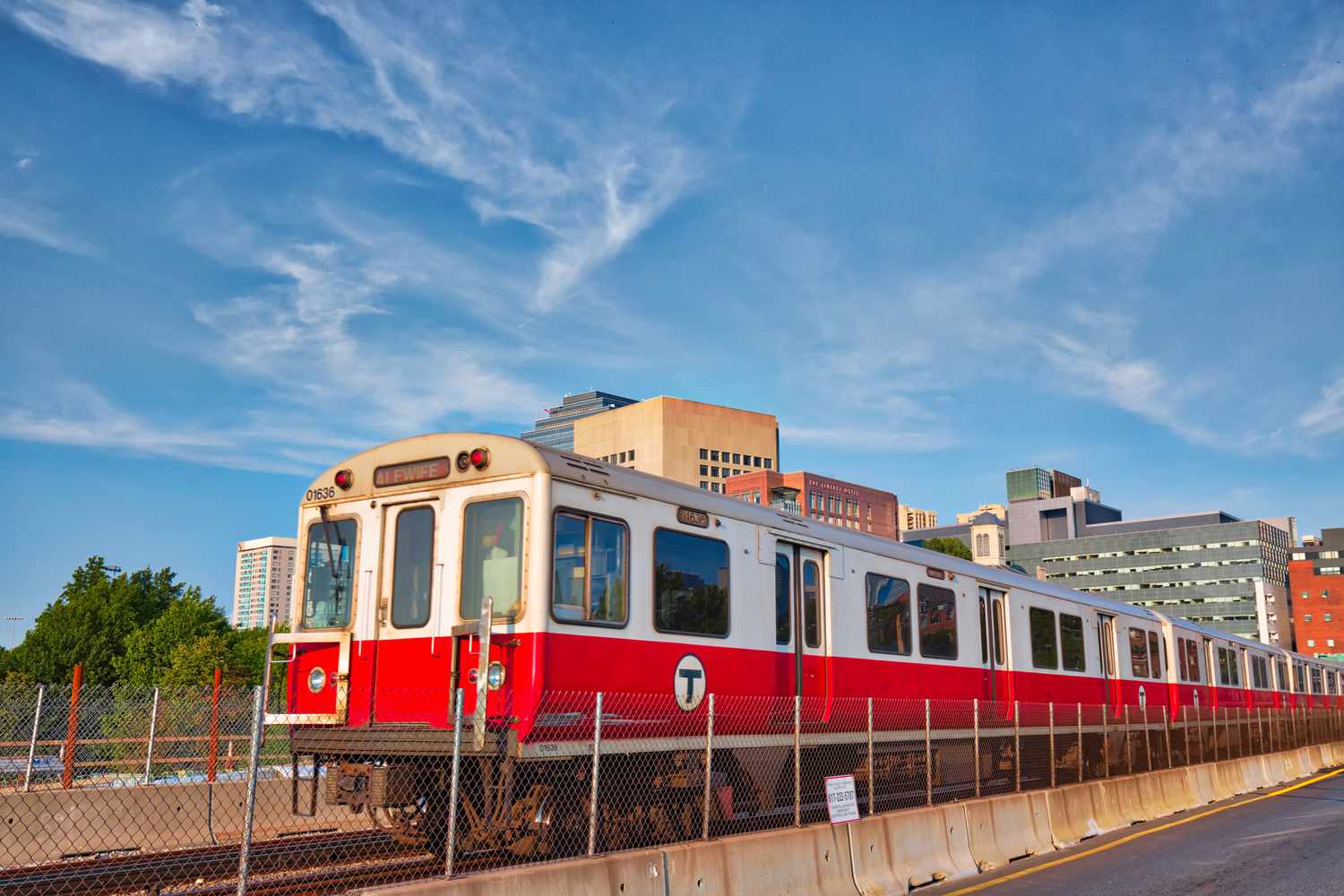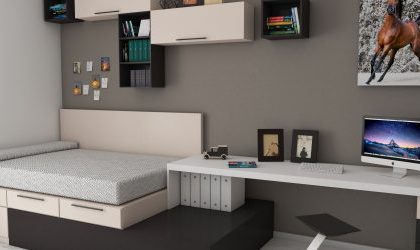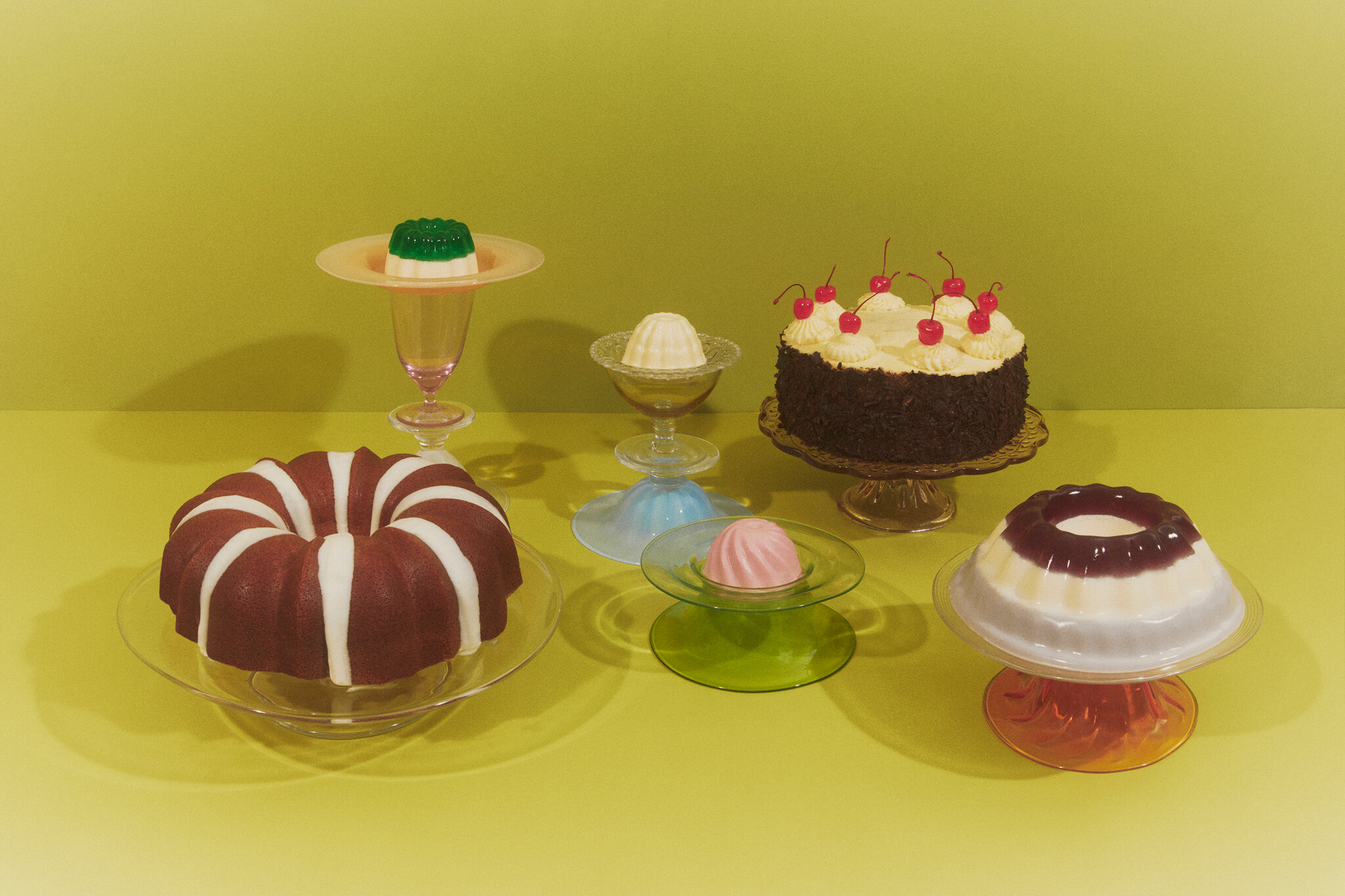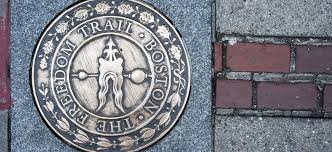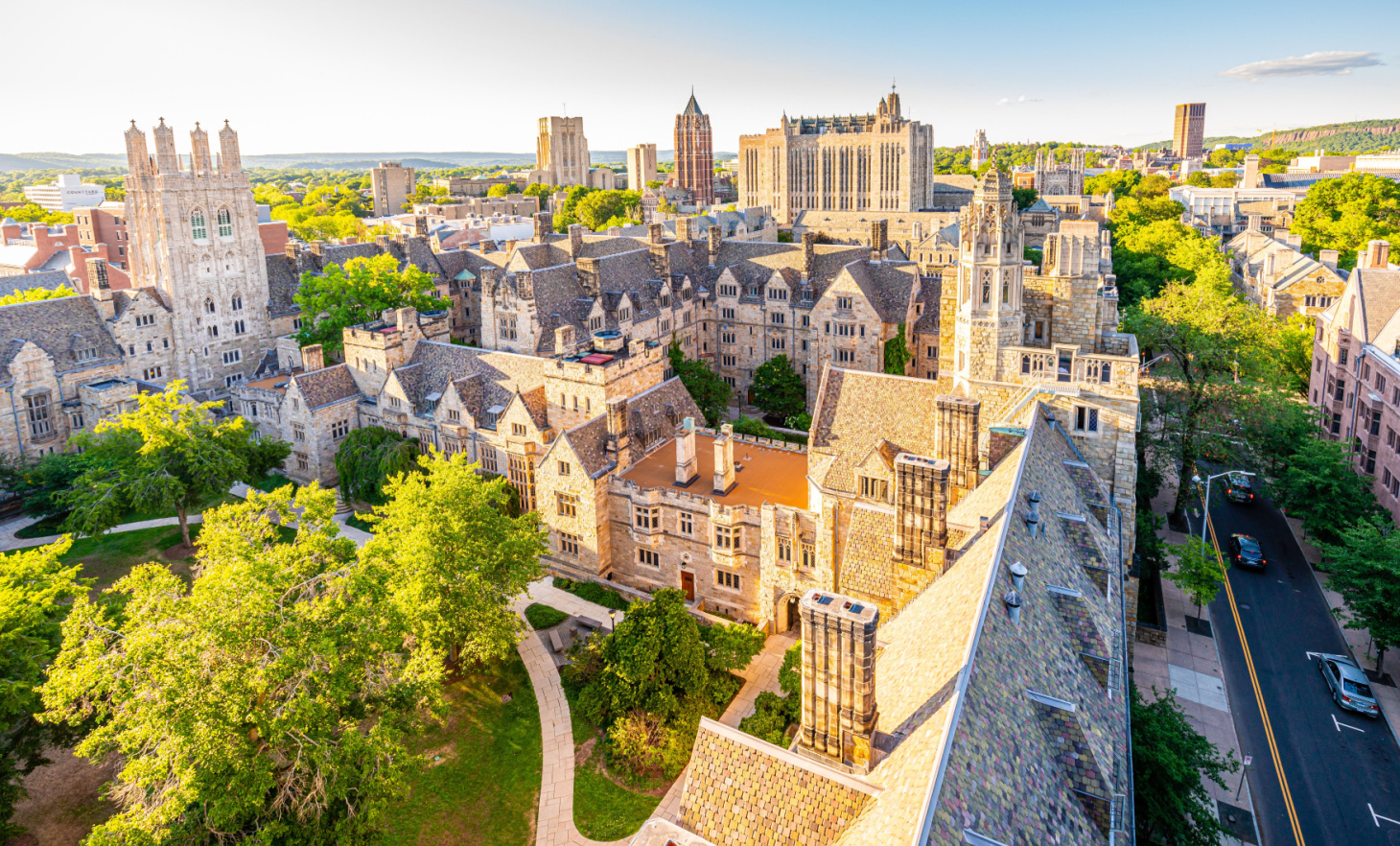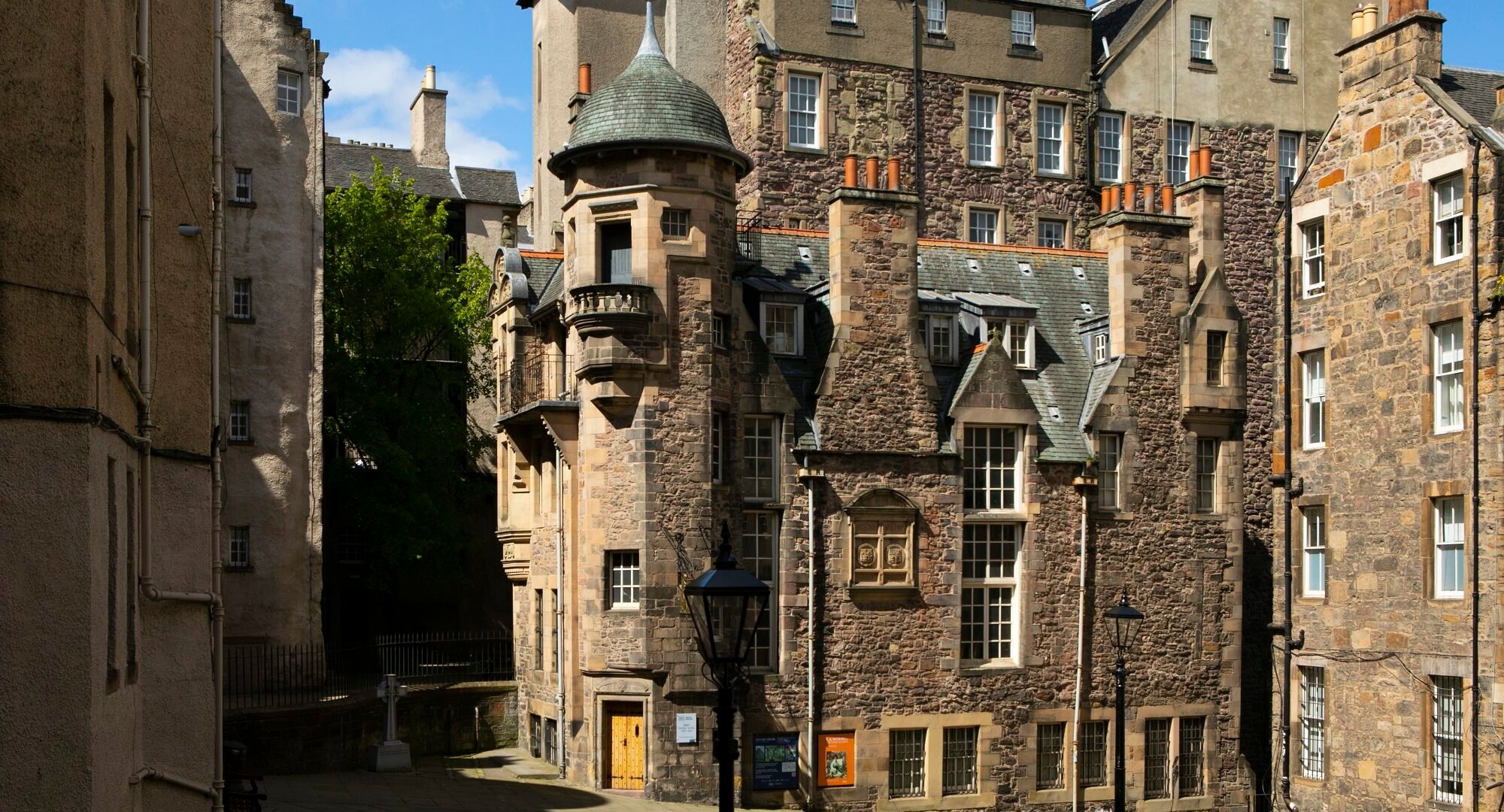In Boston, where public transportation is developed, the subway is one of the necessary means of travel for most people. However, the Boston subway line is complicated, which may be difficult for the friends who have just arrived here to figure out in a short time. So how do I take the subway in Boston? How many lines are there in the Boston subway? What are the operating hours? How much does the Boston subway cost? How do I buy a Boston subway ticket? What should I pay attention to when taking the subway in Boston? Today, let’s take a deep look on the Boston subway line and ticket purchase strategy, including Boston subway routes and operating hours, ticket prices, methods of purchasing tickets and other precautions.
⭐Information of the Boston Subway
1. Introduction to the Boston Subway System
The MBTA Subway is a subway system in Boston, Massachusetts, United States, operated by the Massachusetts Bay Transportation Authority. The transit authority operates the metro, bus, train, and boat transportation systems in the Greater Boston area.
The Boston subway is the oldest subway system in the United States, starting in 1897, which is seven years earlier than the New York subway opened in 1904. At the end of the 19th century, in order to solve the problem of traffic congestion and chaos, Boston opened the first underground rail line for PCC streetcars in 1897, from Boylston station to Park Street station, on the east side of Boston Common. In 1901, Boston’s first elevated rail line was built, which formerly was the southern portion of the Orange Line along Washington Street, and has been demolished now. Soon after, several branch lines and routes were opened. To date, the Boston Metro has opened six major lines, including the Green Line (streetcar system), the Orange Line, the Blue Line, the Red Line, the Matpan Line (high-speed independent right-of-way streetcar line), and the Silver Line (BRT system).
In Boston, the subway sign is represented by the letter “T”. While, the big “T” on the street is the subway station sign, and the smaller T is the bus sign. In the Boston Metro, you can not see the rush like in the Hong Kong subway and New York subway. Everything here is so leisurely, seeming to imitate the classical style of the European urban environment.
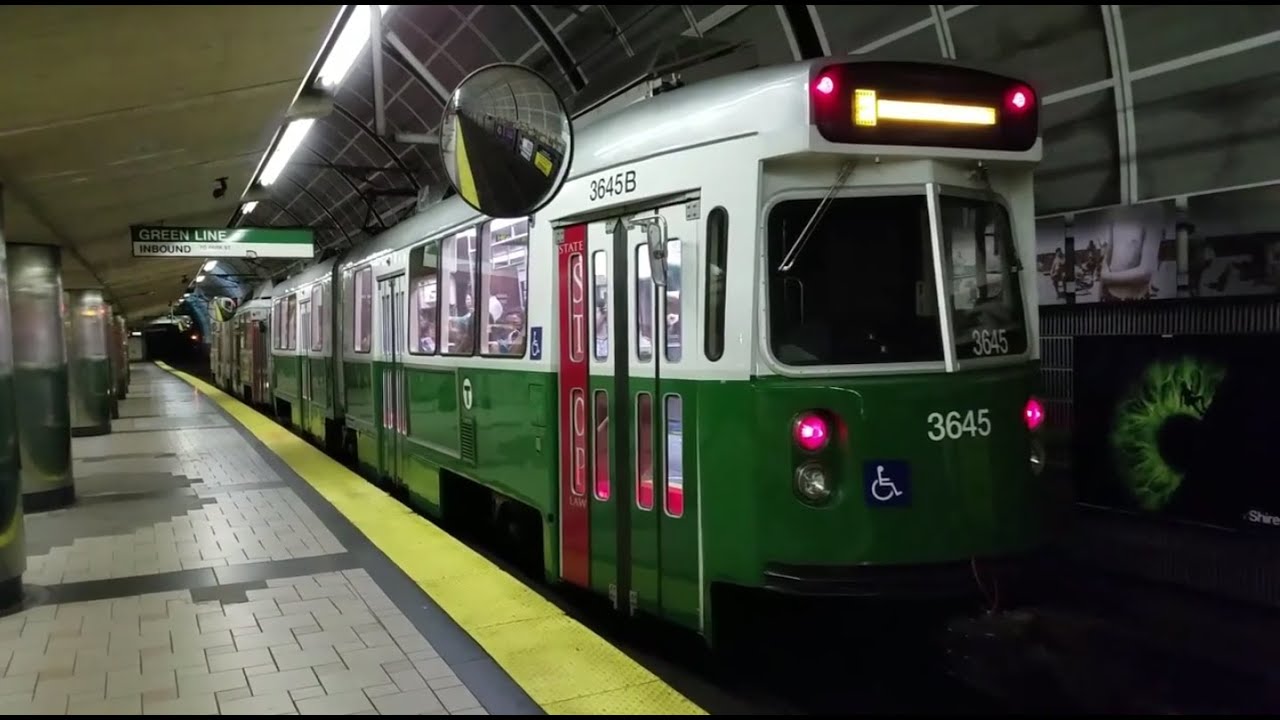
2. Boston Subway Lines and Major Stop
There are 5 lines in Boston subway, which is divided into Blue Line, Green Line, Orange Line, Red Line and Silver Line according to the color of the subway. Moreover, it is convenient to take the subway directly to Harvard University, Massachusetts Institute of Technology, Boston University and Northeastern University. Besides, some attractions such as Boston Common, Boston Public Library, shopping district, Boston Red Sox baseball Stadium, and Quincy Market can also be reached by subway.
However, strictly speaking, the Silver Line, mostly the on ground traffic, is a bus line that connects various stations and important transportation hubs on the ground. Comparing to the general bus with long-time waiting and unpunctuality, the Silver Line, as a subway system, runs on time frequently. In addition to the Silver Line, the other lines intersect in pairs near the city center, making it easy to transfer to all parts of Boston. There is also an Ashmont-Mattapan High-Speed Line, which is an extension of the Green and Red Lines.
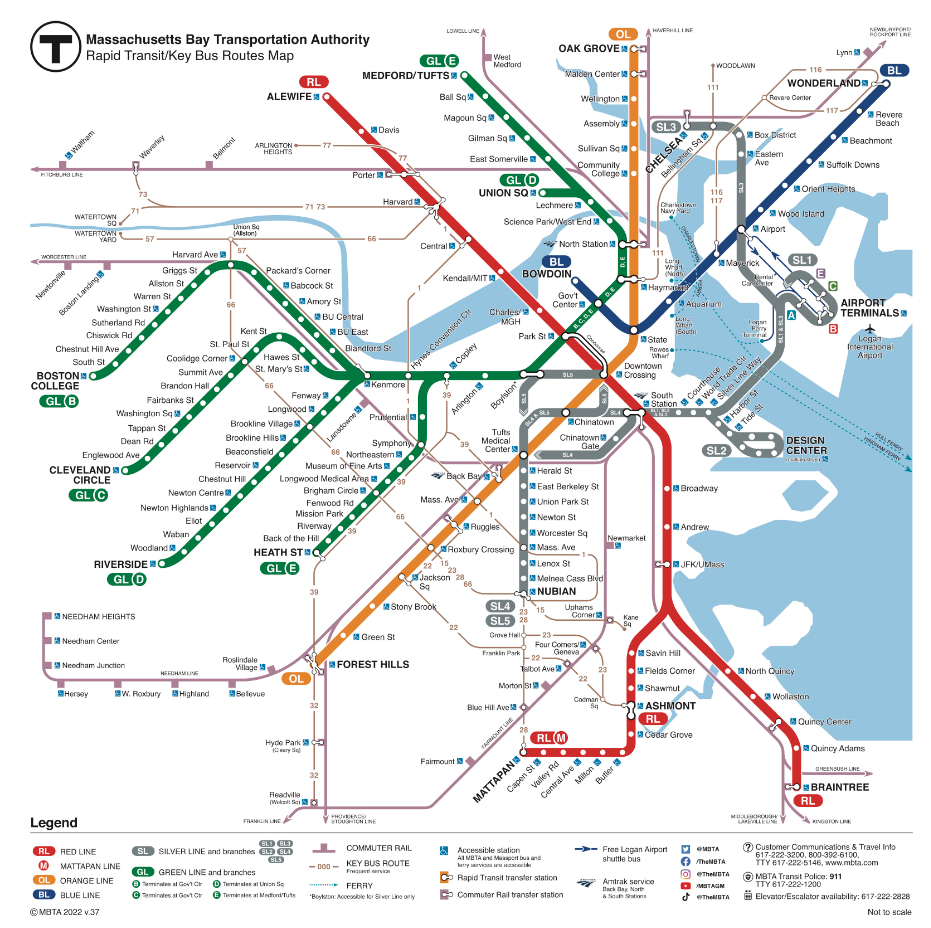
Red Line
The Red Line is the main line of heavy rail in Boston, with the largest passenger volume. The line runs through downtown Boston, passing Harvard University and the Massachusetts Institute of Technology along the way and connecting the Cambridge and Quincy.
The Red Line splits into two branches at JFK/UMass station, one to Braintree and the other to Ashmont. Besides, the passengers can transfer to the Red Line’s extension, the Ashmont-Mattapan high-speed line from the Ashmont. So there are three operating lines on the Red Line, which are the Alewife-Braintree line, the Alwife-Ashmont line and the Ashmont-Mattapan line.
Orange Line
The Orange Line is a single line running north-south from the Oak Grove in the north to the Forest Hill in the south. Besides, this line passes through Boston North Station, TD Garden, Boston Public Market, Boston Common, Chinatown, Trinity Church, Boston Public Library, Boston Symphony Hall, Northeastern University and other important locations.
If you study at Northeastern University, you should be familiar with this line. Because its Ruggles station is located inside the Northeastern University campus, and it is also the reason why many Northeastern University students choose to live in Malden. Not only because the Malden houses are cheap but also there is a subway directly to the campus.
Green Line
The Green Line is the most complex line of the Boston Subway, which is starting at Lechmere Station. However, at the Copley station in the center of the city, the Green Line is separated to four different directions, which are B line (Boston College), C Line (Cleveland Circle), D Lline (Riverside) and E Line (Heath Street). So pay attention to the destination when taking the Green Line. In addition, the Green Line also runs through Boston University (Branch B), Boston College (Branch B), and Northeastern University (Branch E).
Line B: It is from Park Street in the east to Boston College in the west. Students who attended Boston University and Boston College will be very familiar with this line, because both schools are along the line.
Line C: From North Satation in the east to Cleverland Circle in the west.
Line D: Running from Park Street in the east to Riverside in the west, it is the fastest of the Green Line’s branches because it has the fewest red lights along the way. (You have to wait at a red light when being on the subway in Boston because the Green Line runs above ground.)
Line E: It is from Lechmere in the east to Heath street in the west. Students attending the Northeastern University will be very familiar with this branch line, as the Northeastern University station is inside the school.
Actually, the Green Line used to have the A line, but it was replaced by the 57 bus, so only leaving the four other subway lines.
Note: There is an electronic plate in the front of each subway in each branch line. Because the green Line is mostly running on the ground, once you sit in the wrong direction, you have to pay once again to sit back in the opposite direction. So Pay attention to choose the right line to when taking the Green Line!
Blue Line
The Blue Line is the shortest of all metro lines, with a start-to-finish travel time of less than 30 minutes. It is from Bowdoin to Wonderland and one of the most important stops is the Airport. Meanwhile, people usually take this subway line to the airport. After arriving at the Airport station, you need to get out of the subway and transfer to the airport bus to go to the different terminals. At the same time, the airport bus is free, so it is very convenient.
Silver Line
The Silver Line, Boston’s original bus line for the airport, is basically the least touched line. Besides, it is connected to the Washington Street Corridor, the South Boston Pier Bus Lane, and Logan International Airport through a partially underground bus lane. The line consists of above-ground bus lanes, a one-mile tunnel, and three underground stations.
It is divided into four operating lines: SL1, SL2, SL3, SL4 and SL5. Among them, SL1 is more accessible to everyone, because it is the airport special line. Different from the Blue Line, after taking the Silver Line SL1 from the South Station, you can go directly to all terminals of the airport without changing buses, which is convenient and fast.
Summary of Boston Subway Lines
| Line | Driving Zone | Totle Length (km) | the Number of Station |
|---|---|---|---|
| Red Line | Alewife→Braintree Alewife→Ashmont Alewife→Mattapan |
33 | 22 |
| Orange Line | Oak Geove→Forest Hills | 18 | 19 |
| Green Line | B Lline:Lechmere→Boston College C Line:Lechmere→Cleveland Circle D Line:Lechmere→Riverside E Line:Lechmere→Heath |
36.4 | B Line:20 C Line:15 D Line:15 E Line:20 |
| Blue Lline | Wonderland→Bowdoin | 9.5 | 12 |
| Silver Line | SL1:Logan Airport→South Station SL2:Drydock→South Station SL3:Chelsea→South Station SL4:Nubian Station→South Station SL5:Nubian Station→ Downtown Crossing |
14.9 | 5 |
3. Ride The Most Complex Green Line in Boston
The Green Line is the oldest and most complex line in the Boston subway system. It divides into four different branches (B, C, D, E) in the city center, and most of its sections run on the ground, more like a Trolley. For beginners, the Green Line is the route where it is easiest to take the wrong bus, so an independent and practical guide is needed.
Complexity Analysis of Green Line
The complexity of Green Line is mainly reflected in the following two points:
- Multi-branch system: At key stops such as Copley Square and Kenmore Square, The Green Line will branch out into four lines including B (Boston College), C (Cleveland Circle), D (Riverside), and E (Heath Street). Sitting on the wrong branch means the direction is completely wrong.
- Ground operation: Most sections of the Green Line share the right of way with ground traffic, which means that “subways” will stop at red lights and move at a slower speed. This is also one of the reasons why the “T”, which is often mentioned by locals in Boston, is frequently delayed.
Green Line Riding Tips (A Must-Read for Beginners)
To ensure your smooth ride on the Green Line, please follow the following practical tips:
Tip One: Only look at the terminal station sign
- When waiting on the platform, do not just look at the “Green Line”. You must check the electronic sign at the front of the train or the sign on the side of the carriage to confirm that it is the correct branch bound for your destination.
- If there are no clear letter signs on the train, please ask the platform staff or fellow passengers.
Tip Two: Line D (Riverside) is the "fastest" choice
- If you need to quickly cross the city center, Line D (Riverside) is usually the best choice. Because it has the most independent right of way, stops at the fewest red lights and is relatively the fastest.
Tip Three: Plan your transfer in advance
- The transfer points of Green Line (such as Park Street and Government Center) are very crowded during peak hours. It is recommended to use the official MBTA App or Google Maps to check the train’s location and estimated arrival time in real time to avoid long waiting times.
Tip Four: Pay attention to the payment methods of ground stations
- At underground stations, you pay when entering the station. But at ground stations, you need to pay the driver when getting on the vehicle. Using Tap-to-Pay or CharlieCard can speed up the boarding process.
4. Boston Subway Operating Hours and Schedules
The Boston subway system operates roughly between 5 a.m. and midnight. On weekdays, Metro trains operate more frequently, with one arriving about every few minutes. On weekends and holidays, the operating hours and frequency may be adjusted, and passengers need to check the relevant schedule in advance.
The specific operation time of different lines will be different. You can refer to the following operation schedule for specific information:
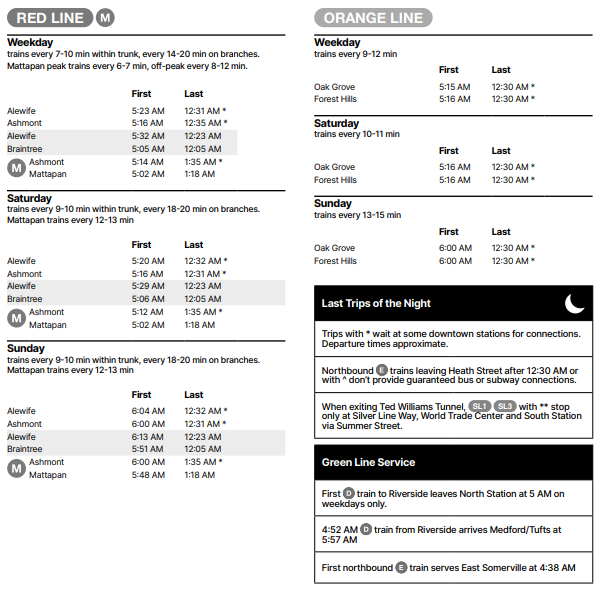
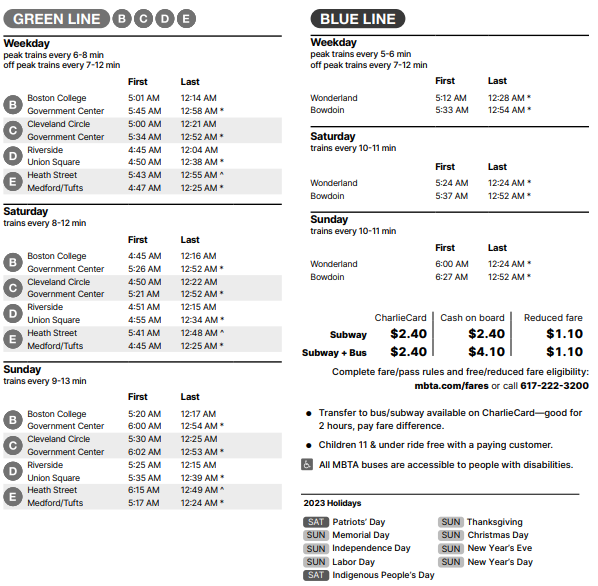
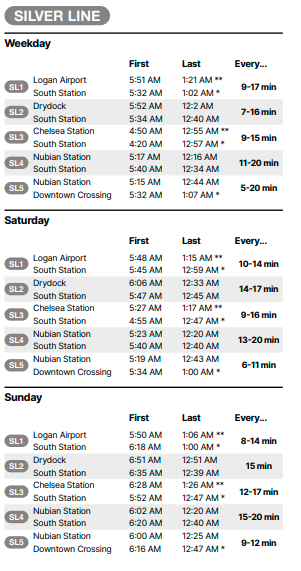
5. Boston Subway Ticket Types and Prices
Fares on the Boston subway system are based on the distance and time of the ride. Besides, passengers can choose to use different kinds of tickets such as one-way tickets, one-day passes, and seven-day passes.
One-Way Tickets
The price of a single ticket depends on the distance that the passenger travels. Additionally, one-way tickets can be purchased at the automated ticket machines inside the metro stations, or at station ticket booths or via the MBT PP.
The price of a single ticket is as follows:
| Distance (mile) | Price (dollar) |
|---|---|
| 0-2 | 2.40 |
| 2-5 | 2.90 |
| 5-7 | 3.30 |
| 7-9 | 3.65 |
| 9-15 | 4.25 |
| 15-20 | 6.50 |
Some passengers, such as senior citizens and students, are eligible for discounted fares. In addition, military personnel and children under the age of 11 can travel with free of charge.
Charlie Card and Charlie Ticket
The Charlie Card is an electronic payment card in the Boston subway system that can be used to pay for subway, bus, and light rail fares. Passengers can purchase Charlie Cards at automated ticket machines inside metro stations and top them up at station booths or MBT PP. In addition, the Charlie Ticket is a paper ticket that can be purchased at automated ticket machines inside subway stations. Currently, the price of a ticket using Charlie Card or Charlie Ticket is the same as a single ticket.
Additionally, the two tickets are basically the same, except that the Charlie Card is plastic and the Charlie Ticket is paper. Both cards can be used multiple times after storing value, and both can be upgraded to 1-day, 7-day, or 1-month passes.
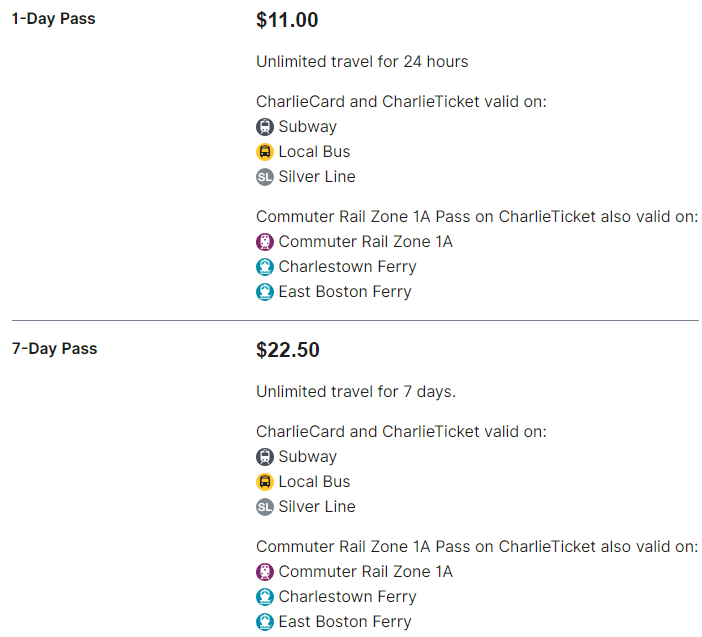
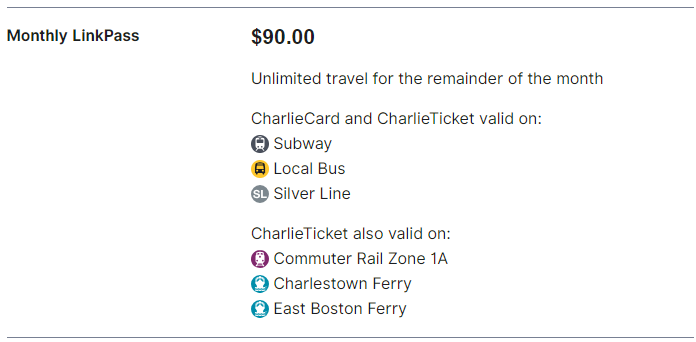
Tap-to-Pay
MBTA has fully launched the Tap-to-Pay contactless payment system. This update represents the most significant transformation of Boston’s public transportation in recent years, offering great convenience to both tourists and newcomers.
Advantages of Tap-to-Pay
- No Charlie Card/Ticket required: You can directly use a credit card/debit card with contactless payment function, a mobile wallet (such as Google Pay, Apple Pay), or a smartwatch to swipe your card at the turnstiles and on the bus to enter the station.
- Convenience: The payment process is the same as using Charlie Card. Just “tap and pay”, eliminating the trouble of queuing up to buy tickets or recharge.
- Standard fare: The fare paid with Tap-to-Pay is the same as the standard fare paid with Charlie Card, and no additional charges will be incurred.
MBTA Subway Fare Comparison Table
| Ticket Type | Price | Applicable Population/Advantages |
|---|---|---|
| One-way ticket (Tap-to-Pay/CharlieCard) | $2.40 | Most convenient; suitable for occasional tourists or beginners. |
| One-way ticket (cash/paper ticket) | $2.90 | Least recommended; the most expensive; some sites no longer offer paper tickets. |
| 1-Day Pass | $11.00 | Suitable for tourists who take more than five rides in a day. |
| 7-Day Pass | $22.50 | Most economical; suitable for tourists or students with short-term stays (3 to 7 days). |
| Monthly LinkPass | $90.00 | Suitable for long-term commuters. |
6. Boston Subway Riding Precautions
1. There are many stations in the Boston Metro Green Line. So in order to avoid getting lost or wasting time, it is recommended to checking the station, route and the ride schedule in advance.
2. Some subway platforms is written with “Inbound” and “Outbound”. The “Inbound” refers to the train toward the city center, while the “Outbound” refers to the train away from the city center. So we can judge whether we have chosen the right direction according to the sign, especially for the Red Lines and Green Lines with branches.
3. Charlie Card can be demagnetized easily, which is a fatal point. Therefore, take care to keep away from highly magnetic objects.
4.It is necessary to maintain safety and order in the subway. Meanwhile, it is not allowed to smoke, drink or litter in the carriage. Additionally, in case of emergency, do not hesitate to contact the subway staff in time.
5. There are some priority seats on the Green Line for the elderly, pregnant women and passengers with physical disabilities, and other passengers can offer the seat to them in need.
6.When taking pets on the subway, you need to pay attention to the regulations. Only small pets are allowed, and pets must be carried in cages or bags to avoid inconvenience to other passengers.
7. When the subway suddenly stops running, follow the follow the command of the radio or the staff and do not be panic. In addition, for emergencies, call 911 or MBTA Transit Police (TPD) at 617-222-1212.
If you’re thinking about studying in the US, it’s crucial to find the right student accommodation. That’s where uhomes comes in. It’s a reliable platform that helps students like you find the perfect place to live in New York, Boston, Los Angeles, Chicago, San Francisco and many other cities. So far, they’ve helped more than 55,000 students successfully find their dream homes.

FAQ
It was in 1897 that the first line of the Boston Subway was completed and opened.
It is around 12 midnight to just before 1am.
The locals usually call the Boston subway the “T”.
In 1949, there was a campaign song written for Mayoral candidate Walter A. O’Brien, Jr., called “Charlie on the MTA”. It tells the story of Charlie, a subway rider, who was stuck on an endless train underneath the streets of Boston as he was unable to pay for the exit fare.
If you are interested in Boston study life. Please check following blogs!
